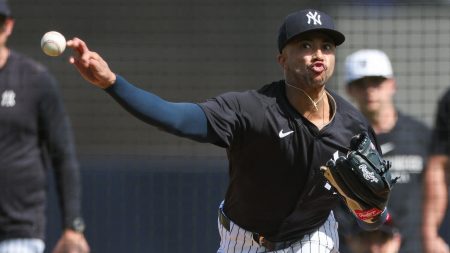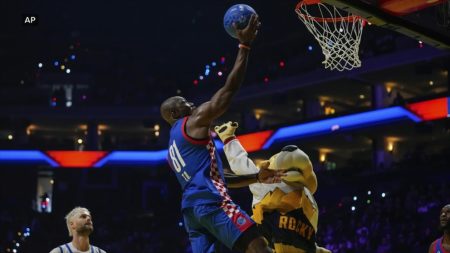The Cincinnati Reds Acquire Gavin Lux from the Los Angeles Dodgers: A Strategic Move for 2024
The Cincinnati Reds have made a significant move in their bid to compete in the National League Central this season by acquiring infielder Gavin Lux from the Los Angeles Dodgers. According to sources, the Reds parted with a competitive balance Round A draft pick (valued at approximately $2.5 million in bonus-pool money) and outfield prospect Mike Sirota to secure Lux, a 27-year-old infielder who has already won two World Series titles with the Dodgers. This trade adds another prime-age hitter to a Reds roster that is looking to rebound from a disappointing 77-85 season in 2023.
Gavin Lux: A Talented Infielder with a Promising Future
Gavin Lux, the 27-year-old infielder at the center of the trade, has long been considered one of the most talented prospects in baseball. His career with the Dodgers was marked by flashes of brilliance, though injuries and positional adjustments have sometimes overshadowed his potential. In 2023, Lux suffered a setback when he tore his ACL, forcing him to miss the entire season. However, he bounced back in impressive fashion during the second half of 2024, batting .304 with a .390 on-base percentage and .508 slugging percentage in 61 games. His performance earned him two wins above replacement (WAR) during that stretch, showcasing the kind of impact player he can be when healthy.
Despite his injury history, Lux’s athleticism and versatility make him a valuable asset to the Reds. He has played 45 games in the outfield, which could allow Cincinnati to experiment with him in different positions to maximize his playing time. With the Dodgers moving Mookie Betts to shortstop last season and recently signing infielder Hyeseong Kim, Lux became expendable. The Reds, however, see an opportunity to integrate him into a lineup that already boasts young stars like Elly De La Cruz, Matt McLain, and Noelvi Marte.
Where Does Gavin Lux Fit in Cincinnati?
The Reds’ roster is already packed with talent at Lux’s primary positions, which include shortstop, second base, and third base. Elly De La Cruz, one of the most exciting young shortstops in the game, has already staked his claim to the position, while Matt McLain has emerged as a standout at second base. Noelvi Marte, a highly touted prospect, is expected to take over at third base, and utilityman Santiago Espinal provides additional depth. However, Lux’s ability to play multiple positions, including the outfield, gives the Reds flexibility in how they deploy him.
Lux’s athleticism and offensive potential could make him a valuable utility player, allowing the Reds to find creative ways to keep his bat in the lineup. His ability to play in the outfield could also provide relief for Cincinnati’s current outfielders, who may benefit from reduced playing time to prevent injuries or fatigue. Additionally, Lux’s experience winning championships with the Dodgers could bring a sense of leadership and playoff pedigree to a young Reds team looking to take the next step in its rebuild.
The Dodgers’ Perspective: A Trade Focused on the Future
For the Dodgers, trading Gavin Lux was a move driven by both immediate needs and long-term considerations. With Mookie Betts already at shortstop and the recent signing of Hyeseong Kim, Lux became less of a necessity for a team that is trying to balance its current contention window with future sustainability. The Dodgers received two key assets in return: a competitive balance Round A draft pick and outfield prospect Mike Sirota.
The draft pick, worth approximately $2.5 million in bonus-pool money, is particularly valuable for a Dodgers team that has seen its draft capital diminished due to luxury tax penalties. After exceeding the luxury tax threshold by more than $40 million, the Dodgers were forced to move their first-round draft pick from 30th overall to 40th, costing them some flexibility in the 2024 draft. Acquiring the Reds’ competitive balance pick helps offset that loss and gives the Dodgers more resources to invest in young talent.
Mike Sirota, a 21-year-old outfield prospect, is another intriguing piece of the deal. Sirota was drafted by the Dodgers in the 16th round in 2021 but opted not to sign, instead choosing to attend Northeastern University. His decision paid off when the Reds selected him with the 87th overall pick in the 2023 draft, signing him for $863,300. Sirota’s combination of power, speed, and plate discipline made him a target for the Dodgers, who believe he has the tools to develop into a well-rounded outfielder at the major league level.
What This Trade Means for the Reds’ 2024 Season
The acquisition of Gavin Lux is a clear signal that the Cincinnati Reds are serious about competing in 2024. After a disappointing 77-85 finish last season, the team is hoping to build on the breakout performances of young stars like Elly De La Cruz and Hunter Greene, who emerged as two of the most exciting players in the National League. Lux’s addition gives the Reds another potent bat in the lineup, as well as the versatility to adjust their roster as needed throughout the season.
Under new manager Terry Francona, the Reds are looking to establish a winning culture and make a push in the National League Central, a division that has been characterized by parity in recent years. The addition of Lux could provide the offensive boost needed to separate the Reds from the pack and make a legitimate playoff run. With Lux set to make just over $3 million in arbitration this year and under team control through the 2026 season, the Reds are betting that his production will far outweigh the cost of the trade.
The Bigger Picture: A Win-Win Trade for Both Teams
While the Reds are clearly focused on the immediate benefits of adding Gavin Lux to their roster, the Dodgers are taking a longer-term view. By trading Lux, they not only freed up roster space for other players but also bolstered their draft capital and added a promising young prospect in Mike Sirota. The competitive balance pick they received will help them navigate the challenges of the 2024 draft, while Sirota’s upside could make him a key contributor in the years to come.
For the Reds, this trade is about taking advantage of Lux’s prime years and maximizing the production they get from him during his arbitration eligibility. If Lux can stay healthy and continue to perform at the level he showed in the second half of 2024, he could become a cornerstone of the Reds’ lineup alongside De La Cruz, McLain, and Marte. At the same time, his versatility ensures that he will remain a valuable asset even as the team’s young infielders continue to develop.
In the end, this trade represents a classic win-win scenario. The Reds get an experienced, championship-tested player who can help them compete right now, while the Dodgers invest in their future by acquiring draft capital and a promising young prospect. As both teams look to navigate the challenges of the 2024 season, this trade serves as a reminder of the delicate balance between short-term success and long-term sustainability in Major League Baseball.










